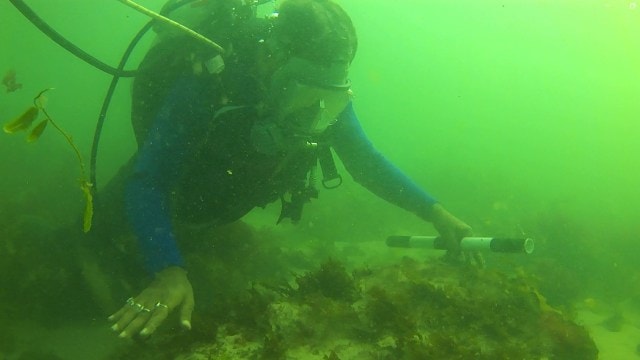Around 20 years ago, the Archaeological Survey of India (ASI) undertook a one-of-its kind exercise: An underwater exploration and excavation work to study underwater ancient remains off the Dwarka coast in Gujarat where Dwarka Nagri – the mythical Mahabharat-era city is believed to be submerged in sea for thousands of years now.
Last month, armed with a new team led by a veteran of the 2005-07 exercise, and comprising three women, the ASI resumed the exercise off the coast of Dwarka between February 17 and 20 with the aim to understand the archaeological importance of the city “in a better way”.

The team of five experts of ASI, led by Additional Director General (Archeology) Alok Tripathi, is part of the Underwater Archaeology Wing (UAW) of the ASI, which has been revived. The Dwarka exercise is the first one that the wing has undertaken after lying defunct for years. Apart from Tripathi, the other members of the team are H K Nayak (Director, Excavations and Explorations), Aparajita Sharma and Poonam Vind (Assistant Superintending Archaeologists), and Rajkumari Barbiba (Assistant Archaeologist).
Explaining the objective behind the exercise, Tripathi said, “The UAW had carried out extensive survey and excavation in 2005-07 in Dwarka. After that, the work had stopped. At that time, the work was done in a limited area. Now, further work has been started again on a larger scale.” Tripathi said that the recent underwater exercise was a preliminary visit to see the location where work was carried out in 2005-07 and to identify areas where further work can be done. More such visits are expected within a month.
 Members of the underwater exploration team (Image: ASI)
Members of the underwater exploration team (Image: ASI)
He said, “It is a new team. And the purpose was also to show the area to the new team members. The team will visit the area again later this month.” He indicated that large-scale excavations are likely to be taken up in winter. “The exercise would include study of the available ancient remains, their dating…,” Tripathi, who was part of the ASI team that carried out the previous underwater explorations, said.
Recollecting the exploration, Tripathi said, “In 2005, we had explored all the places related to Dwarka like Madhavpur, Mul Dwarika, Panch Dwarika, Dwarika, Beyt Dwarika etc.. So, all those places, which are known as (ancient) Dwarka or associated with Dwarka, were explored. After that we focussed on (the area near current) Dwarka.”
He further said, “In 2006, we carried out a hydrographic (study of physical features of the sea, etc) survey. So, the large area off-Dwarka was surveyed in collaboration with the Indian Navy. We had also done a bathymetric (related to depth of a water body) study of the entire area. In 2007, excavations were done. Excavation was also carried out in the Dwarkadheesh Temple complex back then,” he added.
Story continues below this ad
Referring to the 2005-07 exercise, an official release of PIB (Press Information Bureau) had stated, “The coastal areas were examined during low tide where sculptures and stone anchors were discovered. Based on those explorations, underwater excavations were carried out.”
Of late, Dwarka and the ancient city have been in focus since last February when Prime Minister Narendra Modi went scuba diving off the Panchkui beach coast and performed underwater prayers at the site of what is considered to be Dwarka Nagari. “To pray in the city of Dwarka, which is immersed in the waters, was a very divine experience. I felt connected to an ancient era of spiritual grandeur and timeless devotion. May Bhagwan Shri Krishna bless us all,” Modi had tweeted after the scuba diving.
It is believed that after killing his uncle Kamsa, Krishna migrated from Mathura to Dwarka with his Yadava clan, and founded his kingdom here by reclaiming 12 yojana land from the sea. The town, however, is believed to have been submerged under the sea later on. Present-day Dwarka is a coastal town located at the mouth of the Gulf of Kutch, facing the Arabian Sea. The town is a part of the Krishna pilgrimage circuit, which includes Vrindavan, Mathura, Govardhan, Kurukshetra and Puri, and is home to the 13th-century Dwarkadheesh temple.
As per a note from the National Institute of Oceanography, “As Dwarka has the historical importance and association with the Mahabharata, the site has attracted several archaeologists and historians besides scientists.”



 Members of the underwater exploration team (Image: ASI)
Members of the underwater exploration team (Image: ASI)





